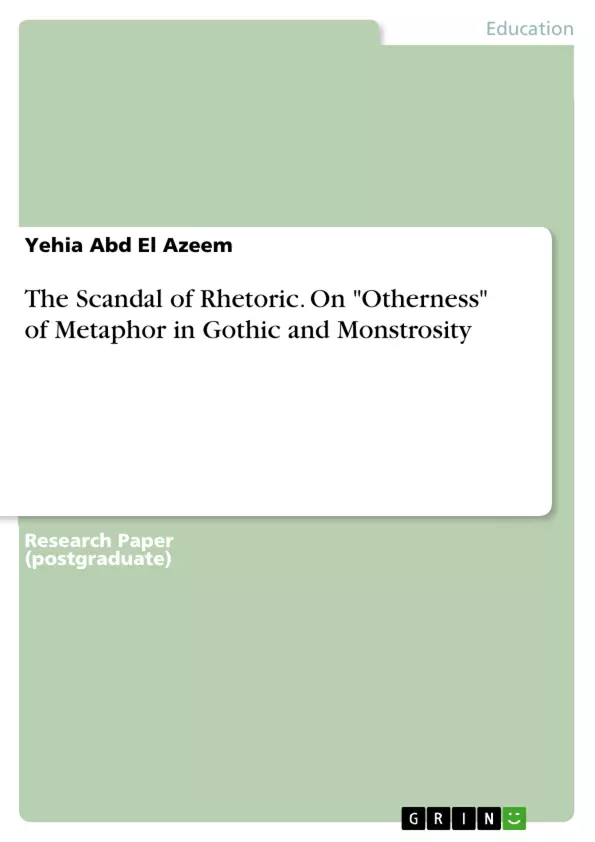This research paper demonstrates another semantic presentation of Metaphor in Gothic texts .i.e. The Island of Doctor Moreau (1896) and Dr.Jekyll and Mr.Hyde (1886), by way of setting in opposition generic understandings of rhetoric in due pace. On the face of it, narration becomes a conditional cognizance of intra-textuality, independent from any authorial promptitude; but which multiply the "subjects" and "objects" into play. In this effect and by conducting a recurrent identification of Metaphoricity in the referential function of metric-levels in music, against the sub-conscious gradations of characterization,a novelty of Dramatic standpoints become imminent according to which we come across new dramatis personae, new shades of empiricism and definitely an author who is scarcely in reach of his text.
Inhaltsverzeichnis (Table of Contents)
- The Scandal of Rhetoric
- Metaphor, Monstrosity, and the Repressed Line of Personification
- The Island of Dr. Moreau
- Freud's Psychic Apparatus
- Tonality, Pulse, and the Psychological Subject
Zielsetzung und Themenschwerpunkte (Objectives and Key Themes)
This essay explores the complexities of metaphor, particularly its "otherness" in relation to gothic literature and monstrosity. It aims to analyze the concept of metaphor as a scandalous rhetorical device, highlighting its potential to disrupt and challenge established norms.- The duality of metaphor as both linguistic and monstrous
- The role of metaphor in shaping and revealing the subconscious
- The connection between metaphor and the themes of monstrosity and deformation
- The application of Freud's psychic apparatus to understand the characters and themes of H.G. Wells' *The Island of Dr. Moreau*
- The relationship between metaphor and musical tonality, particularly the concept of "pulse"
Zusammenfassung der Kapitel (Chapter Summaries)
- The Scandal of Rhetoric: This chapter introduces the concept of metaphor as a scandalous rhetorical device, highlighting its potential to challenge established norms. It explores the duality of metaphor as both linguistic and monstrous, and its role in shaping and revealing the subconscious.
- Metaphor, Monstrosity, and the Repressed Line of Personification: This chapter delves into the connection between metaphor and the themes of monstrosity and deformation, focusing on the example of H.G. Wells' *The Island of Dr. Moreau*. It analyzes the characters and their relationships in terms of Freud's psychic apparatus, examining the roles of the Superego, Ego, and Id.
- Tonality, Pulse, and the Psychological Subject: This chapter examines the relationship between metaphor and musical tonality, particularly the concept of "pulse". It explores how the rhythmic elements of music can be used to represent and analyze the psychological subject.
Schlüsselwörter (Keywords)
This essay centers on the concept of metaphor and its application to the study of gothic literature and monstrosity. Key themes include the "otherness" of metaphor, the subconscious, deformation, the psychic apparatus, and musical tonality.- Quote paper
- Yehia Abd El Azeem (Author), 2013, The Scandal of Rhetoric. On "Otherness" of Metaphor in Gothic and Monstrosity, Munich, GRIN Verlag, https://www.grin.com/document/280272



